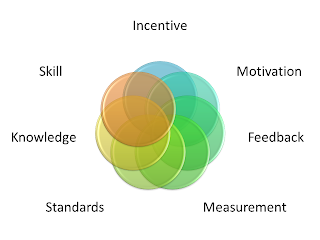Job Performance - Employees & Training

Job Performance - R. Hibbard Job performance is based on several factors. All of the factors must combine to achieve optimal performance from an individual. Training, education, and feedback are critical components to high performance individuals. Keep in mind that job performance and motivation is just as applicable to the hourly employee as it is to the CEO. Everyone has a boss, even the CEO - the Board of Directors. It is the bosses job and the company's job to ensure that employees are challenged and motivated. Absolutely not in a negative way, but in positive ways that encourage creativity and high performance. In the 21st Century Company if the job can be done by computers or robots then that is the path that should be taken, since there is absolutely no way that you can keep people motivated and excited in monotonous, repetitive jobs. There are still jobs that are currently too difficult to automate and special attention mu...

